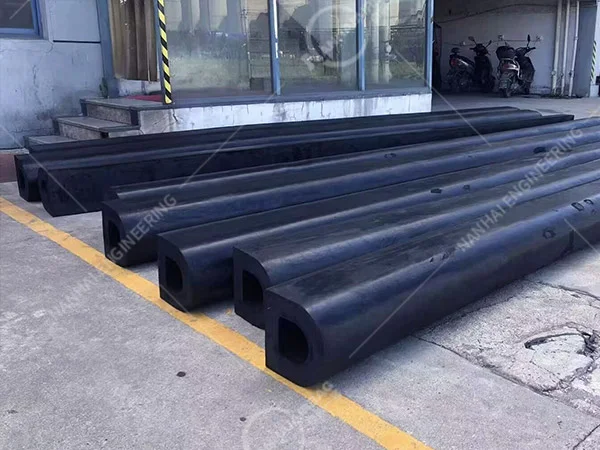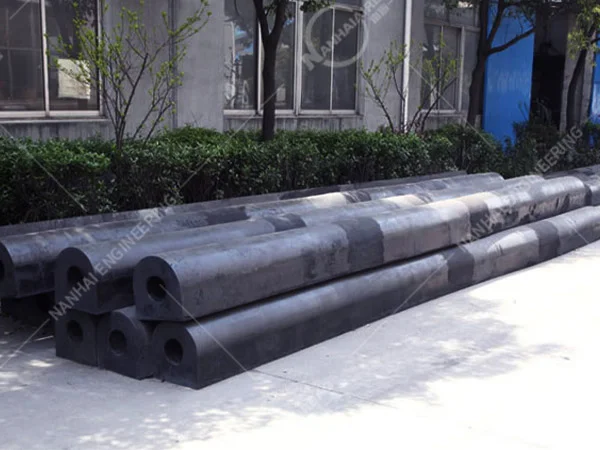Foam Fenders: The Silent Guardians That Save Your Boat, Dock, and Wallet
30/09/2025

Ever watched a charter boat slam into a pitted dock and watched the owner cringe? Or seen a marina lose renters because their old rubber fenders couldn’t handle a big sailboat’s wake? You know the drill—those “little” collisions add up to bigheadaches: thousands in repairs, lost business, and nights spent worrying about liability. That’s where D-rubber fenders step in: the curved, tough-as-nails workhorses of marine safety that turn rough bumps into gentle hugs. Let’s break down why these understated fenders are the upgrade every marina, boat owner, and port operator needs right now.
What Are D-Rubber Fenders? (Spoiler: They’re Not Just “Rubber”)
D-rubber fenders are specialized marine fenders shaped like a wide “D”—think half a rubber tube—designed to wrap around dock pilings, mooring posts, or boat hulls. Their curved profile isn’t just for looks: it lets them conform to uneven surfaces (hello, weathered wood or rusty metal!) and distribute collision force evenlyacross the entire fender. Unlike square or rectangular rubber fenders that concentrate impact at a single point, the D-shape acts like a shock absorber—taking the hit and spreading it out so nothing cracks, splinters, or rusts. They’re made from high-density synthetic rubber that resists UV rays, saltwater, and wear—so they look (and work) great for years.
Why This Matters: When “Old Fenders” Cost You More Than You Think
Let’s get real: Marine traffic is exploding. More yachts, bigger cargo ships, and busier marinas mean collisions are inevitable—and if your fenders are shot, you’re on the hook for the damage.Take Captain Lisa, who runs a fishing charter in North Carolina. Last spring, her 40-foot boat sideswiped a marina’s cracked square rubber fender. The impact dented her hull, scratched the paint, and left her stuck at the dock for three days waiting for repairs—losing $5k in booked trips. “The old fenders were so hard, it felt like hitting a cinder block,” she said. Now she insists the marina uses D-rubber fenders. “Since they switched, no more dents, no more delays. Worth every penny.”Here’s why D-rubber fenders aren’t a “nice-to-have”—they’re a must:
- •Stop Costly Damage: Square rubber fenders can split under heavy impact; D-rubber’s curved design absorbs energy without breaking. No more fixing hulls, docks, or propellers.
- •Work for AnySpace: Whether you’ve got a tiny dinghy dock or a massive cargo terminal, D-rubber fenders fit around pilings, cleats, or even floating buoys. Their flexibility means they conform to weird angles—no custom installation required.
- •Low Maintenance = Happy Wallet: Forget painting, patching, or replacing every season. D-rubber fenders are UV-resistant and waterproof—just hose ’em down if they get dirty. Most last 7–10 years with zero upkeep.
- •Keep Customers Coming Back: A safe marina is a busy marina. Lisa’s old spot lost 20% of its renters after the collision—now they’re fully booked because they upgraded to D-rubber.
How Do D-Rubber Fenders Outperform Other Options? (Spoiler: Science!)
Let’s compare D-rubber to the “old guard” to see why they win:
1. vs. Foam Fenders
Foam is great for small bumps, but it can tear if a rope snags it or harden in cold weather. D-rubber? It’s durable enough to handle commercial traffic, resists punctures, and stays flexible in anytemperature. Plus, D-rubber lasts longer—foam might need replacing every 5 years; D-rubber lasts 7–10.
2. vs. Square Rubber Fenders
Square fenders are cheap, but they’re a false economy. Their sharp edges concentrate impact—so a 10-knot collision can crack a dock piling or split a boat’s hull. D-rubber’s curved shape spreads that force out—turning a hard hit into a gentle push.
3. vs. Marine Airbags
Wait—aren’t marine airbags for launching ships? Exactly. Marine airbags are for buoyancy and guidanceduring ship launches/repairs. D-rubber fenders are for protectingdocks and boats from day-to-day collisions. You might use both, but they’re not interchangeable.
People Also Ask: Your D-Rubber Fender Questions, Answered
We get these all the time—let’s cut through the noise:Q: How do D-rubber fenders work better than regular rubber fenders?A: Their “D” shape conforms to uneven surfaces (like weathered docks) and distributes collision force evenly. Regular rubber fenders are often square/rectangular—they hit hard at one point, causing more damage.Q: Are D-rubber fenders good for small boats?A: Totally!They’re flexible enough to wrap around small dock posts and gentle enough to protect dinghies or kayaks. No more worrying about scratching your prized fiberglass boat.Q: How long do D-rubber fenders last?A: With minimal care (rinse salt off occasionally), 7–10 years is standard. Many brands offer 8-year warranties—try getting that with foam or square rubber.Q: Do D-rubber fenders work in saltwater?A: Yes!They’re made from synthetic rubber that resists salt corrosion. Perfect for coastal marinas, offshore rigs, or anything exposed to brackish water.Q: Are D-rubber fenders more expensive than foam?A: Maybe a little upfront—but they last 2–3 times longer and prevent costly damage. Over time, they’re way cheaper than replacing foam every few years.Q: Can I use D-rubber fenders for commercial docks?A: Absolutely!They’re designed for high-traffic areas. Ports, fishing charters, and yacht clubs all use D-rubber because they handle big boats and constant use.
Final Thoughts: Stop Fixing, Start Protecting
If you’re tired of replacing fenders, fixing damage, or losing customers over safety, D-rubber fenders are your answer. They’re durable, versatile, and built to handle whatever your marine space throws at them—without breaking the bank.Don’t wait for the next collision to cost you. Swap your old fenders for D-rubber, and watch your stress (and repair bills) disappear. Your dock, your boat, and your bottom line will thank you.Keywords: marine airbags, marine fenders, rubber fendersP.S. Pro tip from marina owners: Look for D-rubber fenders with a “rebound rating” of 80% or higher. That means they bounce back faster—so they’re ready for the next hit. Trust us, it matters!
